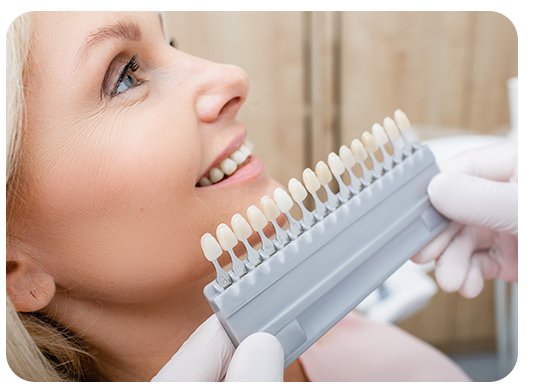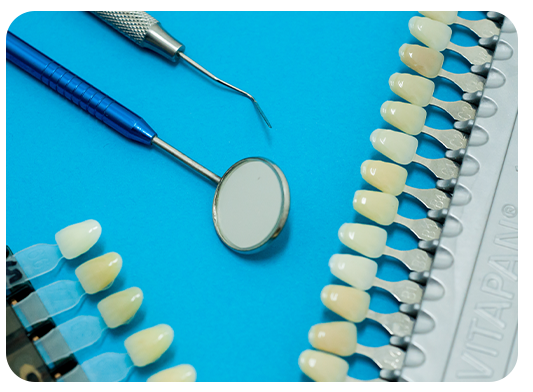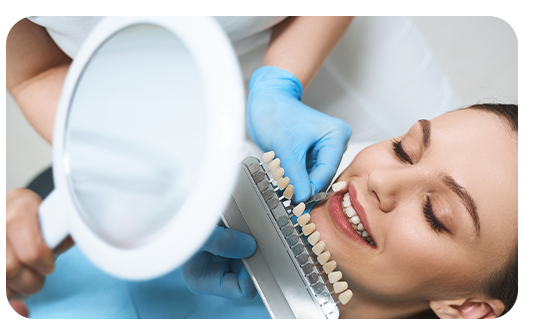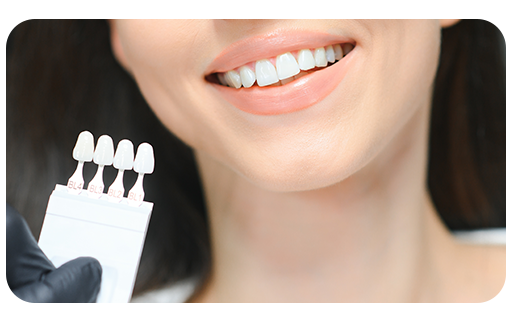Dental Veneers
Today, aesthetic dentistry aims not only to ensure healthy teeth but also to create a beautiful and attractive smile. The lamine dental application, also known as porcelain veneers, is one of the most popular and effective methods to achieve this goal. This procedure involves placing a thin layer of material on the front surface of the teeth, offering both aesthetic and functional improvements. In this article, you will find detailed information about what lamine dental applications are, who they are suitable for, their advantages, and important things to consider.
What is the Lamine Dental Application?
🦷 What is the Lamine Dental Application?
A lamine dental application involves the bonding of thin porcelain or composite resin layers to the front surface of the teeth. These veneers are used to correct the color, shape, size, and even minor misalignments of the teeth. The procedure is minimally invasive, meaning the natural structure of


Who Is the Lamine Dental Application Suitable For?
🦷 Ideal Candidates for Lamine Dental Application:
- Discolored Teeth: Stained or discolored teeth can be brightened and restored to a white, glossy appearance with veneers.
- Worn Teeth: Teeth that have worn down over time can be reshaped and restored with veneers.
- Gaps Between Teeth: If there are gaps between the teeth, these can be closed with veneers.
- Mild Misalignments: Minor misalignments can be corrected with veneers, eliminating the need for orthodontic treatment. 🦷
- Cracked or Chipped Teeth: Small fractures or chips in teeth can be restored with veneers.
However, lamine dental applications may not be suitable for everyone. Individuals with gum disease, cavities, or excessive teeth grinding habits should first address these issues before considering veneers.
Advantages of Lamine Dental Applications
🦷 Benefits of Lamine Dental Application:
- Natural Look: Veneers are designed to seamlessly blend with the natural structure of the teeth, ensuring a completely natural appearance.
- Minimal Invasiveness: Only a thin layer of enamel is removed from the front surface of the teeth, preserving the tooth's natural structure.
- Quick Results: The procedure can be completed in just 1 session, providing impressive results in a short amount of time.
- Long-Lasting: With proper care and regular dental check-ups, veneers can last 10–15 years.
- Customizable Shade: Veneers can be customized to the desired level of whiteness, allowing for a personalized aesthetic.


Steps of the Lamine Dental Application
🦷 Steps in Lamine Dental Application:
- Initial Examination: The dentist assesses the patient’s dental and gum health. 🩺
- Preparation: A thin layer of enamel is removed from the front surface of the teeth. ⚙️
- Impressions: The dentist takes an impression of the teeth, which is then sent to a dental laboratory for the creation of the veneers. 🖋️
- Temporary Veneers: Temporary veneers are placed while the permanent ones are being made. 🦷
- Placement: Once the permanent veneers are ready, they are bonded to the teeth using a special adhesive. 📏
How to Care for Lamine Veneers?
🦷 Aftercare Tips for Lamine Dental Application:
- Brush and Floss Regularly: Daily brushing and flossing are essential to maintain the health of the teeth and veneers. 🪥
- Avoid Hard Foods: To prevent damage, it is recommended to avoid very hard foods. 🍬
- Regular Dental Checkups: Ongoing dental visits help monitor the condition of the veneers and overall oral health. 🩺


Dental Veneers Conclusion
🌟 The lamine dental application offers a modern and effective solution for individuals with aesthetic concerns. It enhances both the appearance and function of your teeth, providing a beautiful and lasting smile. However, before making a decision, it is essential to consult with an experienced dentist and undergo a thorough examination. At LHC Clinic, we are dedicated to offering high-quality lamine dental applications that meet your unique needs and ensure a perfect, confident smile. 🌟
Sıkça Sorulan Sorular
Common mistakes in tooth brushing can harm oral health. These include:
• Brushing too hard, leading to enamel wear and gum irritation
• Using a toothbrush with hard bristles
• Neglecting to brush for at least two minutes
• Overlooking the gumline and tongue
Correct Technique:
Use a soft-bristled toothbrush at a 45-degree angle to the gums. Apply gentle, circular
motions and avoid scrubbing aggressively. Ensure you brush all surfaces of the teeth,
including the back and chewing surfaces.
Dental floss is essential for oral health because it cleans areas where your toothbrush
cannot reach—specifically between teeth and under the gumline. Without flossing, plaque
buildup can cause gum disease, cavities, and bad breath.
Tip:
Make flossing a daily habit, especially before bedtime, to remove the day's accumulated
debris and bacteria.
Bruxism involves involuntary grinding or clenching of teeth, often during sleep. Possible causes: • Stress and anxiety • Misaligned teeth • Sleep disorders Treatment: • Night guards to protect teeth • Stress management strategies • Orthodontic treatments if misalignment is a factor
Tartar (calculus) is hardened plaque that cannot be removed by brushing alone. It
accumulates along the gumline and between teeth.
Treatment:
• Professional scaling and cleaning are required to remove tartar
• Regular cleanings help prevent its buildup
Preventing tartar starts with daily brushing, flossing, and routine dental visits.
Bone grafting restores bone in areas where it's lost due to tooth extraction, gum disease, or
trauma.Types of bone grafts include:
• Synthetic materials
• Donor or patient’s own bone (autograft)
Bone grafting supports future dental implant placement or maintains facial structure.
